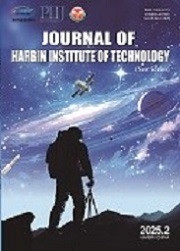| Author Name | Affiliation | | ZHONG Jie | Dept. of Information Science and Electronic Engineering, Zhejiang University, Hangzhou 310058,China | | SHEN Ying-jie | Dept. of Information Science and Electronic Engineering, Zhejiang University, Hangzhou 310058,China | | ZHAO Min-jian | Dept. of Information Science and Electronic Engineering, Zhejiang University, Hangzhou 310058,China | | LI Li-yan | Dept. of Information Science and Electronic Engineering, Zhejiang University, Hangzhou 310058,China |
|
| Abstract: |
| A delay-finding detector is proposed to enhance acquisition sensitivity for indoor GNSS signals. Traditionally, the over-threshold detector on amplitude or peak-to-mean ratio is employed for signal acquisition. Instead, the proposed detector exploits peak positions of successive multiple detections covering a full range of code phase offset to refine the detection performance. Due to each peak position corresponding to an optimal estimate of current code delay, the new detector is named delay-finding detector. On the other hand, a pre-detection processing involved in delay-finding detector aims at confronting the indoor multipath effects. A time domain filter is applied to combine the power of inner-chip multipath components. In addition, a self-adaptive method for dynamically adjusting integration time is designed to further enhance acquisition efficiency in the whole algorithm. The simulation results demonstrate that the proposed algorithm is capable of acquiring the signal when the Carrier-to-Noise Ratio is as low as 22 dB-Hz, fixing the residual Doppler offset at the worst situation. It is capable of increasing detection probability significantly for two-path channel. |
| Key words: Indoor sensitiviy multipath acquistion delay-finding detector |
| DOI:10.11916/j.issn.1005-9113.2012.05.002 |
| Clc Number:TN961 |
| Fund: |






